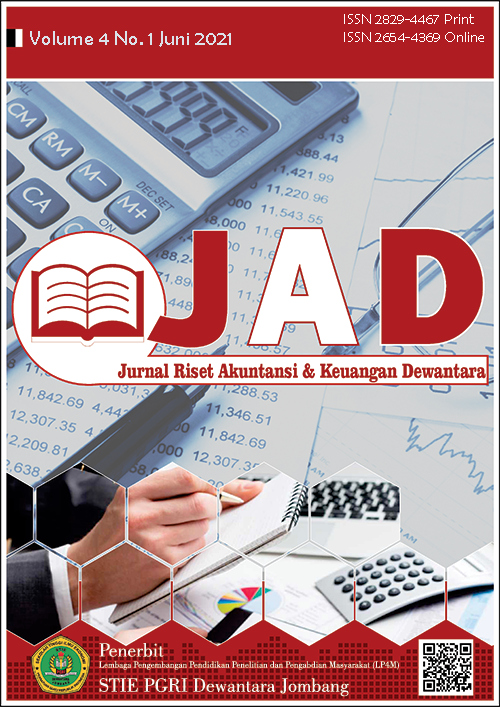Pengaruh Risiko Kredit Dan Risiko Likuiditas Terhadap Profitabilitas Pada Bank BUMN
 Abstract views: 5481
,
Abstract views: 5481
,
 PDF (Bahasa Indonesia) downloads: 7144
PDF (Bahasa Indonesia) downloads: 7144
Abstract
Banks in carrying out their operations are certainly not free from various kinds of risks. Bank business risk is the uncertainty regarding an outcome that is expected or expected to be received. Non Performing Loan (NPL) Is a financial ratio related to credit risk. Loan to Deposit Ratio (LDR) is a ratio that measures a Bank's ability to meet its obligations. This study aims to determine the effect of credit risk (NPL), liquidity risk (LDR) partially and simultaneously on profitability as indicated by the ROA (Return to Assets) ratio using multiple linear regression tests for state-owned banks listed on the Indonesia Stock Exchange for the period 2015- 2019. This type of research is descriptive research with secondary data derived from the financial statements of listed BUMN banks and obtained directly from the website on the Indonesia Stock Exchange. This study uses data from 2015-2019 with a sample size of 4 Bumn Banks from a total population of 20 Bumn Banks. The results of this study indicate that; 1) Credit Risk (NPL) simultaneously affects profitability partially; 2) Partially liquidity risk (LDR) has no effect on profitability; and 3) Credit Risk and Liquidity Risk simultaneously affect profitability.
Section
Section Editor
Authors who publish with this journal agree to the following terms:
- Copyright on any article is retained by the author(s).
- The author grants the journal, right of first publication with the work simultaneously licensed under a Creative Commons Attribution License that allows others to share the work with an acknowledgment of the work’s authorship and initial publication in this journal.
- Authors are able to enter into separate, additional contractual arrangements for the non-exclusive distribution of the journal’s published version of the work (e.g., post it to an institutional repository or publish it in a book), with an acknowledgment of its initial publication in this journal.
- Authors are permitted and encouraged to post their work online (e.g., in institutional repositories or on their website) prior to and during the submission process, as it can lead to productive exchanges, as well as earlier and greater citation of published work.
- The article and any associated published material is distributed under the Creative Commons Attribution-ShareAlike 4.0 International License






